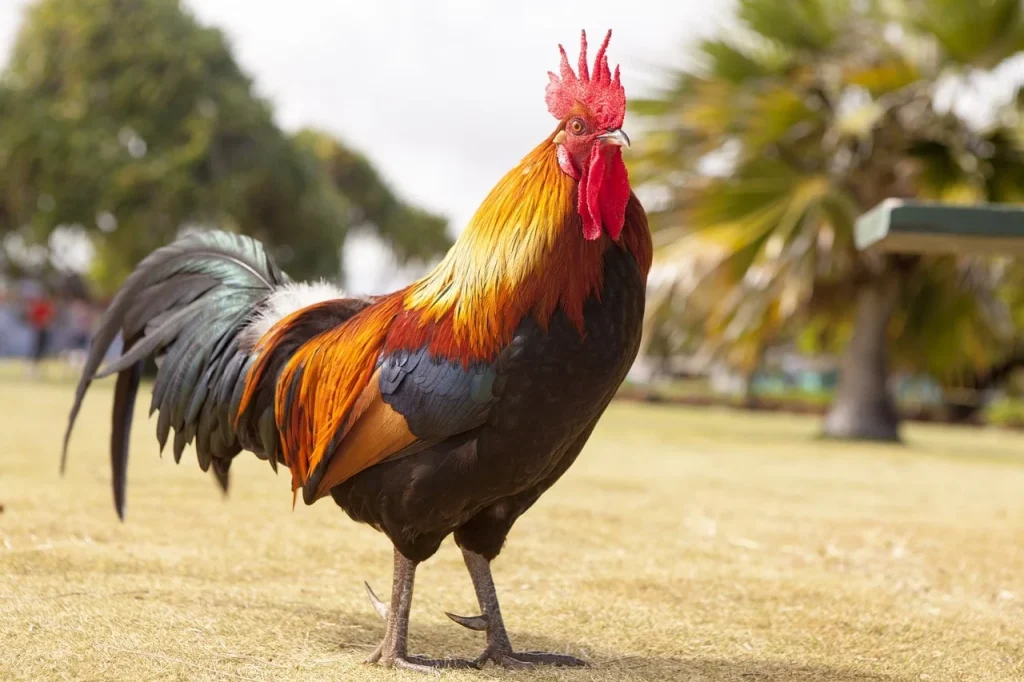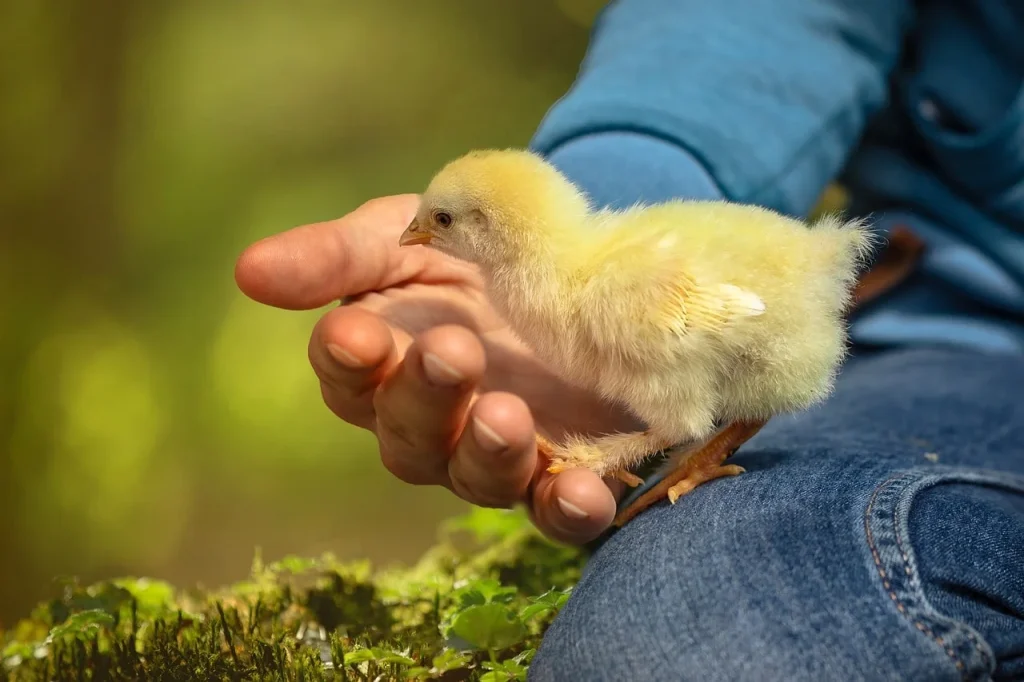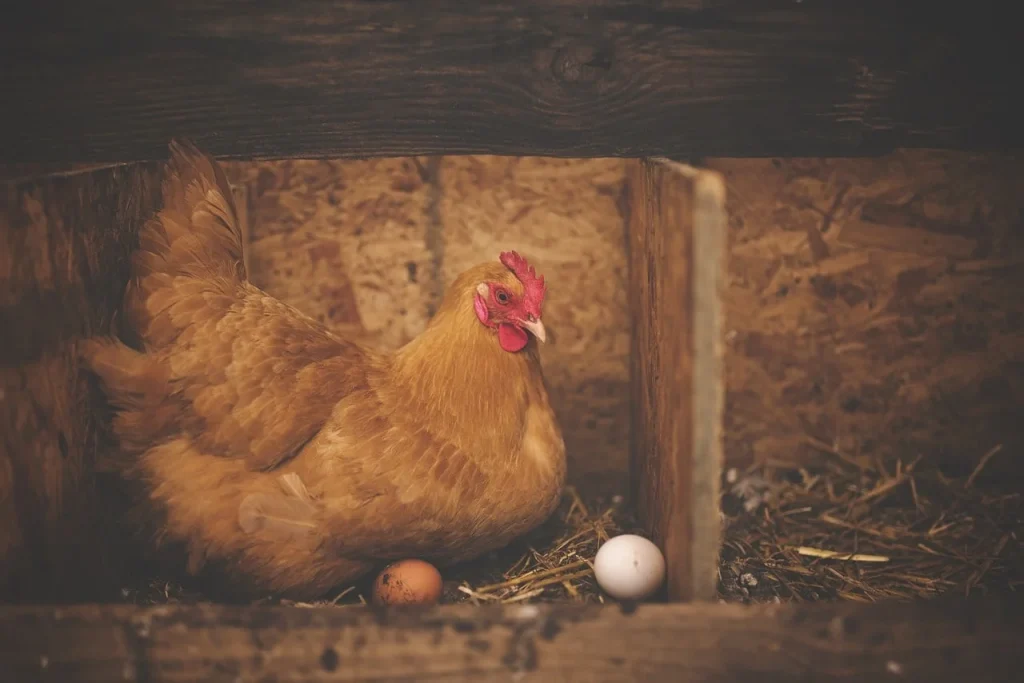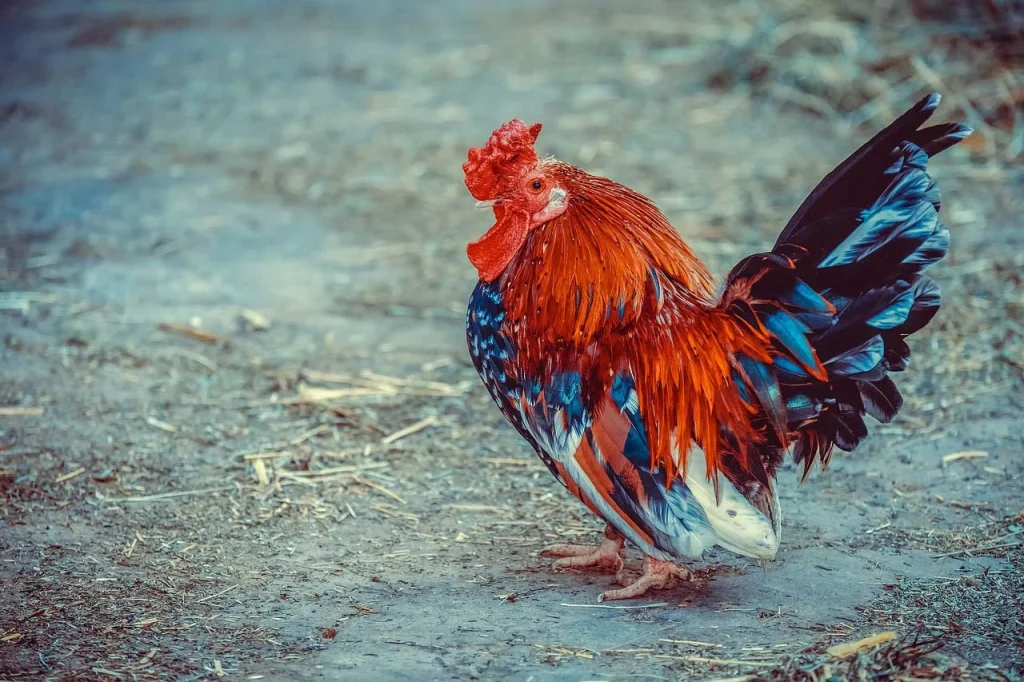Today, we crack open the egg of mystery that surrounds one of the farm’s most familiar faces: the chicken.
In this article, we’ll unveil some fun facts about chickens that will make you look at this common bird in a whole new way. From their role in history to their emotional depth, chickens are not just about pecking around and laying eggs.
Did you know that some chickens have a taste for music, bobbing their heads to their favorite tunes? It’s time to give them the respect they deserve. Ready to learn more about what makes chickens so egg-ceptional?
The only thing that chickens fear more than foxes is the colonel.
Seth Godin
Chicken Facts
Get ready to cluck with knowledge as we dive into the fascinating world of chickens! Pay close attention to each fact, because a quiz awaits at the end to test your expertise.
- They can remember over 100 different faces of people or animals.
- A group is capable of complex communication with over 30 different types of calls.
- Their color vision is one of the most superior in the animal kingdom.
- These birds dream while they sleep, experiencing rapid eye movement (REM) sleep.
- Roosters perform a dance called tiding, which is essentially a way to attract mates.
- They can crossbreed with other birds, resulting in hybrids like the turken, a cross between a turkey and a hen.
- Their bones have a natural mutation that makes them denser and stronger than those of other birds.
- Genetic studies show they were first domesticated in Southeast Asia over 8,000 years ago.
- An individual can learn to solve basic puzzles and can demonstrate self-control to achieve a better reward.
- Capable of recognizing themselves in a mirror, they display signs of self-awareness.
- Their heart beats at a rate of 250-300 beats per minute.
- Oviparous females can lay different colored eggs, including blue, green, brown, and white, depending on the breed.
- Chickens are one of the few animals that have been sent into space.

- The fear of chickens is called Alektorophobia.
- Their closest living relative is the T-rex, sharing many genetic similarities.
- Surprisingly, they are not native to most parts of the world where they are now found.
- A rooster’s crow is so loud, it can reach 130 decibels, which is as loud as a jet taking off.
- They can travel up to 9 miles per hour when running.
- The longest recorded flight of a chicken is 13 seconds.
- Feathers are used not just for flight or warmth but also for communication and display.
- There is a breed called Silkie, which has wool-like feathers.
- These birds are capable of full-color vision, like humans, thanks to their retinal structure.
- A mother hen turns her eggs about 50 times per day to maintain the temperature and humidity necessary for embryo development.
- Spurs on their legs are used primarily for fighting and defense against predators or rivals.
- Egg laying is affected by daylight; thus, hens lay fewer eggs in the winter.
- The largest egg ever laid by a hen was nearly 12 ounces, with a double yolk and double shell.
- Diets are incredibly versatile, allowing them to eat everything from seeds to small animals and insects.
- A hen’s comb and wattles help regulate body temperature by releasing excess heat.

- These birds can taste saltiness, but they are not sensitive to sweet or spicy flavors.
- Roosters have built-in air sacs that act like shock absorbers for their very loud crows.
- Their lifespan can vary significantly, from 3 to 15 years, depending on the breed and environment.
- Their earlobes can be used to predict the color of the eggs they will lay, with certain correlations between the lobe color and the eggshell color.
- They have been depicted in human culture and mythology for millennia, symbolizing both courage and cowardice.
- Capons, which are castrated males, were a delicacy in ancient Rome.
- A hen may lay more than 300 eggs per year, depending on the breed.
- They can see ultraviolet light, which helps them in searching for food and recognizing predators.
- Despite their wings, most breeds are very poor flyers.
- Their pecking order, or hierarchy, is a complex social structure that determines access to food and nesting locations.

- A hen’s cluck and the responses of her chicks can be used to measure maternal attachment and distress.
- Their digestive system is so efficient that it can process food in just a couple of hours.
- Surprisingly, they are not capable of tasting sweetness, which can affect their dietary preferences and feeding behavior.
- Males tend to crow in response to disturbances and as a natural wake-up call at dawn.
- Wattles and combs are not just ornamental but are crucial for thermoregulation.
- The world record for the most eggs laid in one day by a single bird is seven.
- A mother hen communicates with her chicks while they are still in the egg, and they can respond through vocalizations.
- They are known to have distinct personalities, ranging from bold to timid.
- Mites and lice are common parasites, but they keep these pests under control by dust bathing regularly.
- The first bird to have its genome sequenced was a red jungle fowl, the wild ancestor of domestic breeds.
- In addition to their beaks, their nails are also a primary tool for foraging and digging.
- Roosters are known for their protective nature, often taking a watchful position to alert the flock of potential threats.
Chicken Myths

Now that we’ve covered the facts, let’s tackle some common myths. In the next section, we’ll separate fact from fiction and reveal the truth behind some popular beliefs.
- Chickens Are Colorblind
It is often believed that they are colorblind, but this is not true. In reality, they possess excellent color vision. Their eyes can detect a wide range of colors, even some in the ultraviolet spectrum, making their visual capabilities superior to humans in some aspects. - Chickens Are Not Intelligent
Contrary to common misconceptions, they are quite intelligent. Problem-solving skills have been observed in chickens, and they can recognize over 100 individual faces of their species. Complex social behaviors are frequently exhibited by them. - Chickens Only Live for a Few Years
Many people think chickens have a short lifespan. However, when properly cared for, chickens can live between 5 and 10 years, and sometimes even longer. The lifespan of a chicken is often influenced by the breed and the quality of care received. - Chickens Can’t Feel Pain
The belief that chickens cannot feel pain is inaccurate. They are equipped with a nervous system similar to that of other animals, which allows them to feel pain and distress. Compassionate handling and care are therefore essential. - A Hen Needs a Rooster to Lay Eggs
This is a common myth. In fact, hens will lay eggs regardless of whether a rooster is present or not. The presence of a rooster is only necessary for the eggs to be fertilized, which leads to the hatching of chicks.
No products found.
Chicken Quotes

We continue with what others have said about these feathered friends, exploring quotes that capture their humor, intelligence, and undeniable charm.
Regard it as just as desirable to build a chicken house as to build a cathedral.
Frank Lloyd Wright
This quote by Frank Lloyd Wright underscores his belief that all acts of creation, no matter how humble or grand, hold equal importance.
I dream of a better tomorrow, where chickens can cross the road and not be questioned about their motives.
Ralph Waldo Emerson
A humorous twist on existential questioning from Ralph Waldo Emerson, imagining a world where chickens’ actions are not scrutinized.
Chickens are interesting pets; they have more personality than goldfish.
Chevy Chase
Chevy Chase humorously comments on the distinctive personalities of chickens compared to more conventional and less interactive pets like goldfish.
I believe if you look in your own heart and you find nothing wrong there, what is there to worry about? What is there to fear?
Confucius
This profound thought from Confucius is a call for introspection and personal integrity, using the metaphor of a chicken’s simplicity and contentment.
A hen is only an egg’s way of making another egg.
Samuel Butler
Samuel Butler’s clever remark reflects his philosophical views on the nature of life and reproduction, using the lifecycle of a chicken to illustrate his point.
Chicken FAQ

As we draw near the end of our exploration, we arrive at our FAQ section. Read carefully, as this is your final stop before the quiz, where you can test your chicken knowledge!
- Are Chickens Dinosaurs?
Yes, they are considered modern-day dinosaurs! They are descendants of the theropods, which were part of the dinosaur group that includes the infamous Tyrannosaurus rex. - Can Chickens Fly?
They can fly, but not very far or high. They are capable of short bursts of flight, which is usually enough to get them over a fence or into a tree for safety. - Will Chickens Eat Mice?
They are opportunistic eaters and can eat mice if they catch them. While not their primary diet, chickens will consume small rodents as part of their varied diet if the opportunity arises. - Why Do Chickens Lose Feathers?
They lose feathers for several reasons, including molting, stress, and health issues. Molting is a natural process where chickens shed old feathers to make way for new ones. Other causes might require attention to their environment or health. - Are Chickens Birds?
Yes, they are birds! They belong to a group called Galliformes, which includes other ground-dwelling birds like turkeys and pheasants. They have all the characteristics of birds, including feathers, beaks, and the ability to lay eggs.
No products found.
Chicken Trivia

Do you think you’re a chicken expert? This quiz will separate the chicks from the roosters. Get ready to crow with pride… or have your feathers ruffled!
Chicken Merch
If you are a true fan of chickens, then you definitely need to check out our merchandise. You can find T-shirts, hoodies, mugs, and tote bags for your favorite designs. Feel free to check out all the other designs in our shop.
Conclusion
To sum it up, chickens are not only essential to our diets but also possess surprising traits that could rival some of the more traditional pets. These birds have shown us their capacity for memory, problem-solving, and even empathy.
As we learn more about their capabilities, our perspective on chickens continues to evolve. They are fascinating creatures that deserve our respect and care. Till next time, stay curious and explore more. Cheers.


